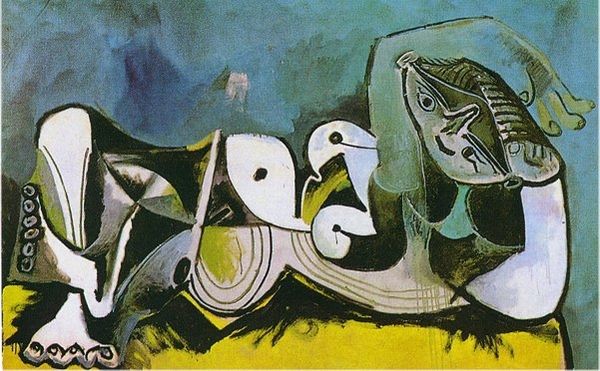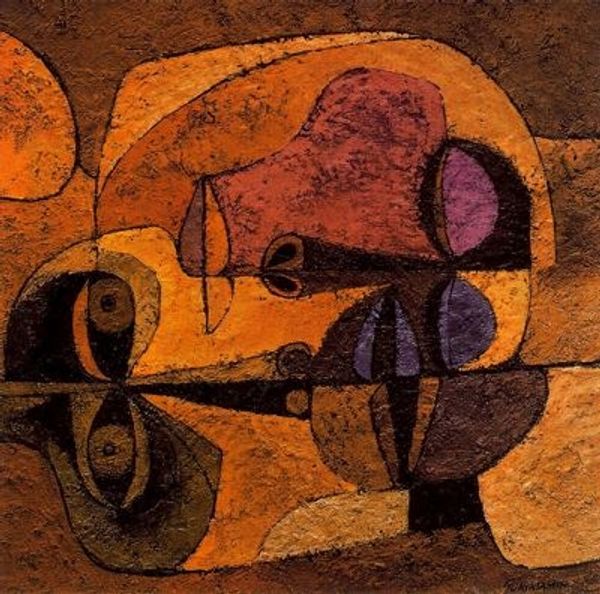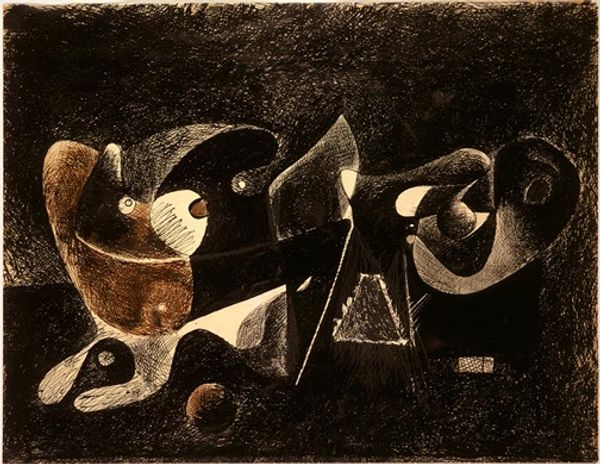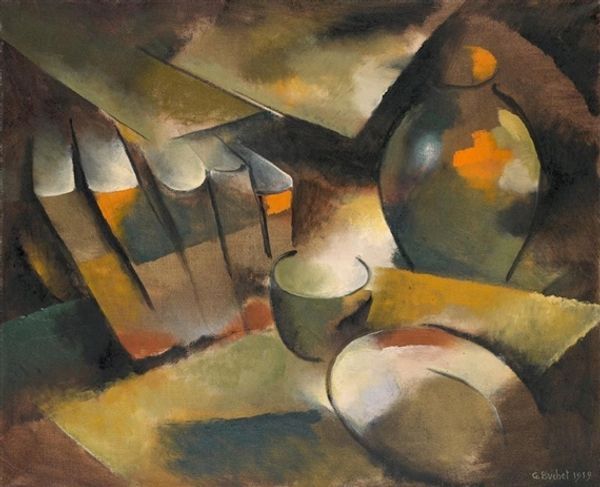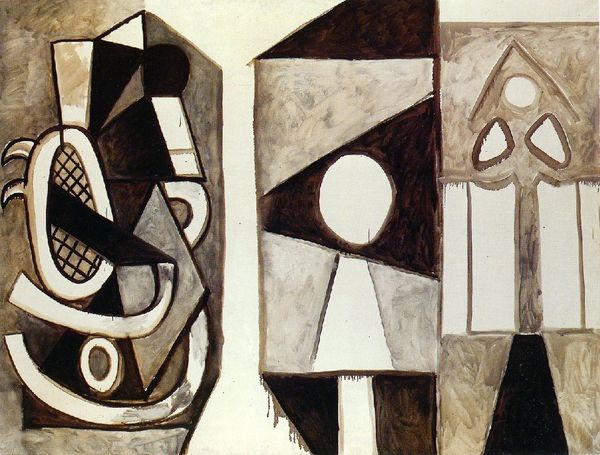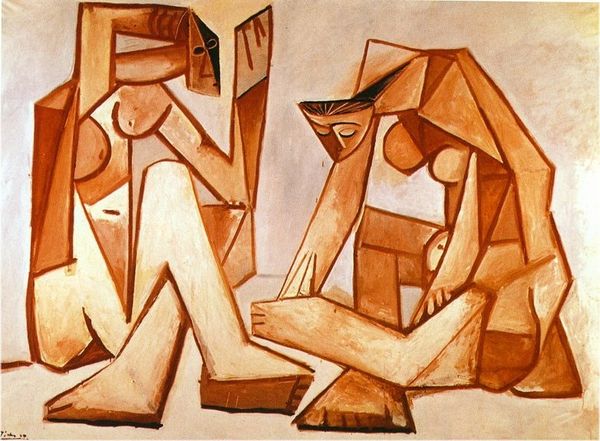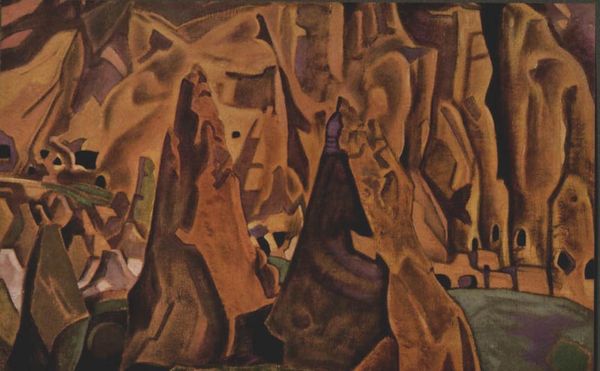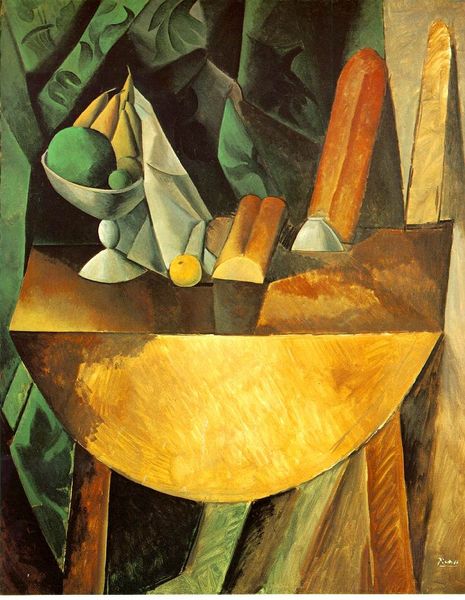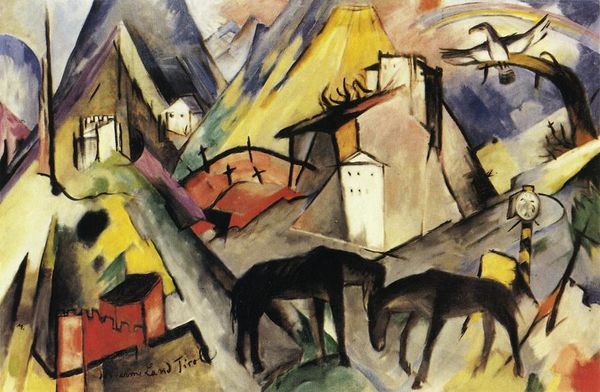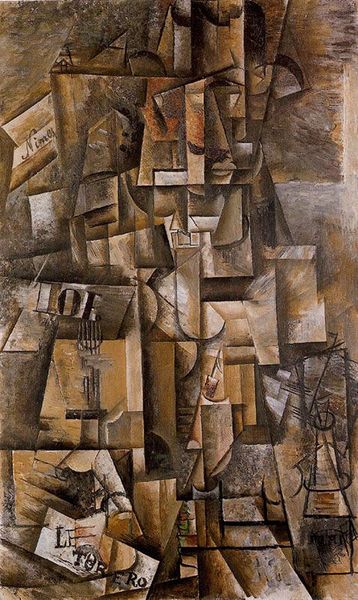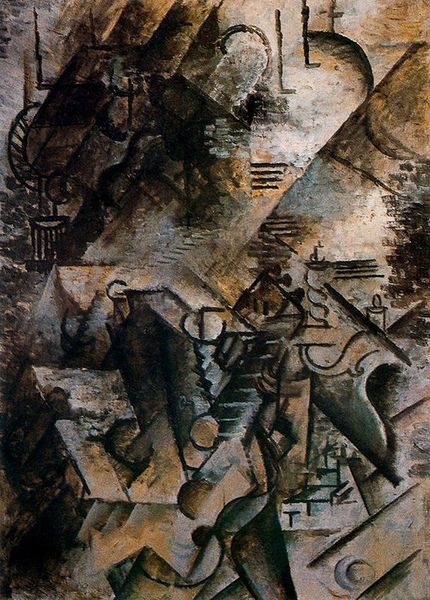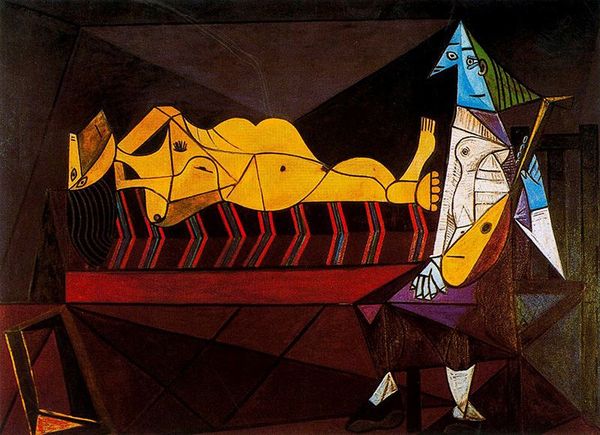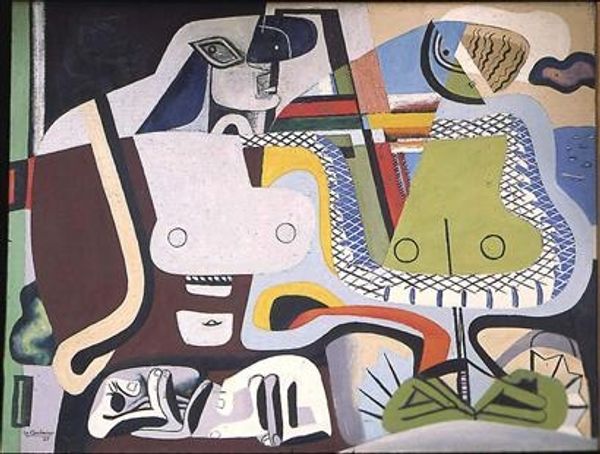
Copyright: Pablo Picasso,Fair Use
Editor: This is Picasso’s “Lying female nude under the pine tree,” created in 1959 using oil paint. The painting is dominated by earthy browns, and the fragmented forms of the figure make it difficult to discern any sort of realistic perspective. What compositional choices strike you most? Curator: The lack of linear perspective is crucial, isn't it? Instead of receding into space, the painting presents a series of planes pushing towards the viewer. Note how Picasso abandons chiaroscuro, opting instead for uniformly lit surfaces which emphasize the objectness of the paint itself. Consider the pine tree in the background, it is flattened and simplified. How does this contribute to the overall effect? Editor: I see what you mean! The tree feels more like a backdrop, which brings attention to the nude figure and Picasso's visual language. It's almost like the figure and background compete. Does this disrupt traditional notions of figure/ground relationships? Curator: Precisely. Observe the use of line, which is both descriptive and independent. The thick outlines segmenting the body exist almost as purely graphic elements. What happens when we regard those lines without necessarily attributing them to the figure’s form? Do the compositional shapes and arrangements then reveal other structures and balances that escape figuration? Editor: That's fascinating. Looking at it abstractly now, I notice how the triangular shapes echo each other across the canvas. Even the face feels assembled from geometric planes, each contributing to a unified, but somewhat fractured, composition. I also appreciate the warm palette. Curator: Indeed. The muted ochres and browns contribute to the overall visual unity. They are also essential to evoking the sensuality of the nude and the organic textures of the nature. The artwork prompts us to engage not just with representation but also with the intrinsic qualities of the painting, itself as an object. It asks: where does the body end and the art begin? Editor: I now perceive the artwork differently. Thank you.
Comments
No comments
Be the first to comment and join the conversation on the ultimate creative platform.
